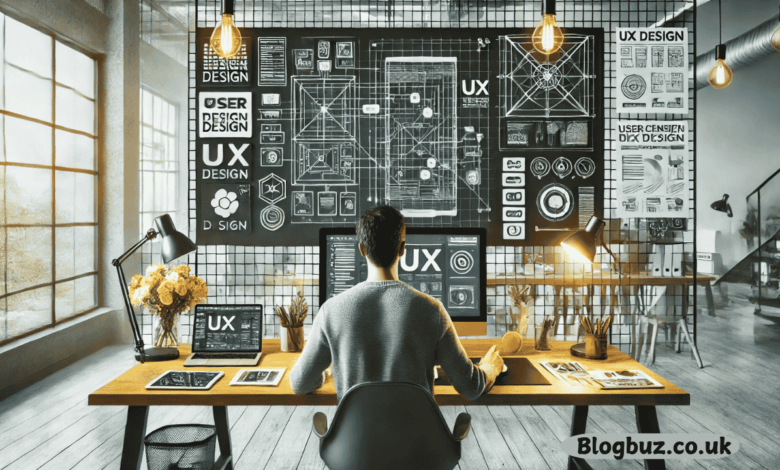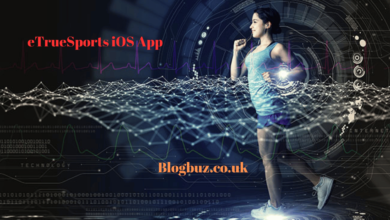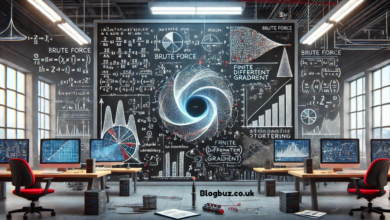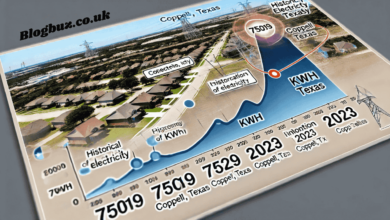Brian Harmon UX Designer: Transforming Digital Experiences with Innovation and Empathy

User experience (UX) design has become pivotal to creating successful products and services in the rapidly evolving digital world. Among the pioneers in this field, Brian Harmon is a visionary UX designer whose work has redefined how users interact with technology. With a unique blend of creativity, empathy, and technical expertise, Harmon has left an indelible mark on the UX design industry. This article delves into his approach, methodologies, and impact, shedding light on why Brian Harmon UX designer is a name that resonates in digital design.
Who is Brian Harmon?
Brian Harmon is a renowned UX designer who is celebrated for his innovative and user-centered designs. With a strong foundation in psychology, he brings a deep understanding of human behavior to his work, enabling him to create solutions that genuinely resonate with users. Harmon’s career spans various industries, including e-commerce, finance, and technology, where he has consistently delivered intuitive and engaging digital experiences.
Harmon’s design philosophy revolves around empathy and inclusivity. He believes that great design goes beyond aesthetics; it must solve real-world problems while being accessible to everyone. This philosophy has guided his career, making him a leading figure in the UX community.
Brian Harmon’s Design Philosophy
A user-first philosophy is at the core of Brian Harmon’s approach to UX design. He emphasizes understanding the user’s needs, preferences, and pain points through comprehensive research and testing. His designs are functional and emotionally engaging, creating connections that keep users returning.
Empathy in Design
Empathy is a cornerstone of Harmon’s design process. He strives to put himself in the user’s shoes, understanding their challenges and expectations. This empathetic approach ensures that his designs address real user needs rather than being driven solely by business objectives.
Accessibility and Inclusivity
Harmon is a strong advocate for accessibility in design. He adheres to the Web Content Accessibility Guidelines (WCAG), ensuring that his digital products are usable by people with disabilities. Harmon’s work exemplifies inclusivity, from incorporating keyboard navigation to providing screen reader compatibility.
Key Techniques and Tools Used by Brian Harmon
Harmon leverages many tools and techniques to create his user-centered designs. His process is structured yet flexible, allowing for creativity within a solid framework. Here are the key steps he follows:
Research and Discovery
Harmon begins every project with thorough research to understand the target audience and their needs. This includes conducting user interviews and surveys and analyzing data to uncover insights that inform his design decisions.
Wireframing and Prototyping
Using tools like Sketch, Figma, and Adobe XD, Harmon creates wireframes and prototypes to visualize the design’s structure and functionality. These prototypes allow stakeholders and users to provide feedback early in the process.
Usability Testing
Harmon places great importance on usability testing, where real users interact with the prototypes. This step helps identify pain points and areas for improvement, ensuring that the final product is intuitive and effective.
Iteration and Refinement
Based on the feedback from usability tests, Harmon iterates and refines his designs. This iterative process ensures that the final product meets user expectations and delivers a seamless experience.
Collaboration and Handoff
Harmon’s collaborative approach involves working closely with developers, product managers, and other stakeholders. He provides detailed design specifications and style guides to ensure a smooth transition from design to development.
Notable Projects by Brian Harmon
Throughout his career, Harmon has worked on numerous high-impact projects that showcase his expertise and innovation. Some of his notable achievements include:
Redesigning Enterprise Applications
Harmon has transformed complex enterprise applications by streamlining workflows and reducing cognitive overload. His designs have improved productivity and user satisfaction in corporate environments.
E-commerce Platform Optimization
Harmon revamped an e-commerce platform with high bounce rates and low conversions. He significantly increased conversion rates and user engagement by simplifying the interface and enhancing mobile optimization.
Mobile Banking App Design
In a project for a mobile banking app, Harmon focused on creating a secure and user-friendly experience. Features like biometric authentication and clear menu structures made the app intuitive and trustworthy.
The Impact of Brian Harmon on the UX Industry
Brian Harmon’s contributions to UX design extend beyond individual projects. His innovative methodologies and commitment to user-centered design have set new standards in the industry.
Advancing Accessibility Standards
Harmon’s advocacy for accessibility has inspired many designers to prioritize inclusivity in their work. His adherence to WCAG standards has made digital products more accessible to users with disabilities.
Inspiring the Next Generation
Harmon is deeply involved in mentorship and education. He frequently conducts workshops, delivers guest lectures, and collaborates with design schools to nurture aspiring UX designers. His efforts have shaped the education of future professionals, fostering a new wave of talent in the industry.
Driving Business Success
Harmon’s designs enhance user experiences and drive business outcomes. By balancing user needs with business goals, he has helped companies increase engagement, retention, and revenue.
Lessons for Aspiring UX Designers
Brian Harmon’s journey offers valuable insights for aspiring UX designers. Here are some lessons from his career:
Embrace Empathy
Understanding the user’s perspective is crucial for creating compelling designs. Harmon’s empathetic approach ensures that his solutions address real user needs.
Prioritize Accessibility
Inclusive design is not just a trend but a necessity. Following accessibility standards can make digital products usable by a broader audience.
Continuously Learn and Adapt
The field of UX design is ever-evolving. Staying updated with the latest tools, trends, and technologies is essential for success.
Build a Strong Portfolio
A well-curated portfolio showcasing diverse projects and design processes can help aspiring designers stand out in the competitive UX industry.
The Future of UX Design: Brian Harmon’s Vision
Brian Harmon envisions a future where UX design becomes more user-centered and innovative. He sees emerging technologies like artificial intelligence, machine learning, and virtual reality significantly shaping digital experiences.
Harmon also emphasizes the importance of sustainability in design. As digital products become more integrated into daily life, designers must consider their environmental impact and strive for ethical practices.
Conclusion
Brian Harmon’s work as a UX designer exemplifies the power of empathy, innovation, and collaboration in creating exceptional digital experiences. His contributions have elevated the standards of UX design and inspired a new generation of designers to push boundaries and think creatively.
As the digital landscape continues to evolve, Harmon’s impact on the industry reminds us that great design is more than aesthetics—it’s about understanding and connecting with users. Whether you’re a business looking to enhance your product or an aspiring designer seeking inspiration, Brian Harmon’s journey offers valuable lessons and insights into UX design.
You May Also Read: Channelsyncharma: The Future of Seamless Digital Communication




